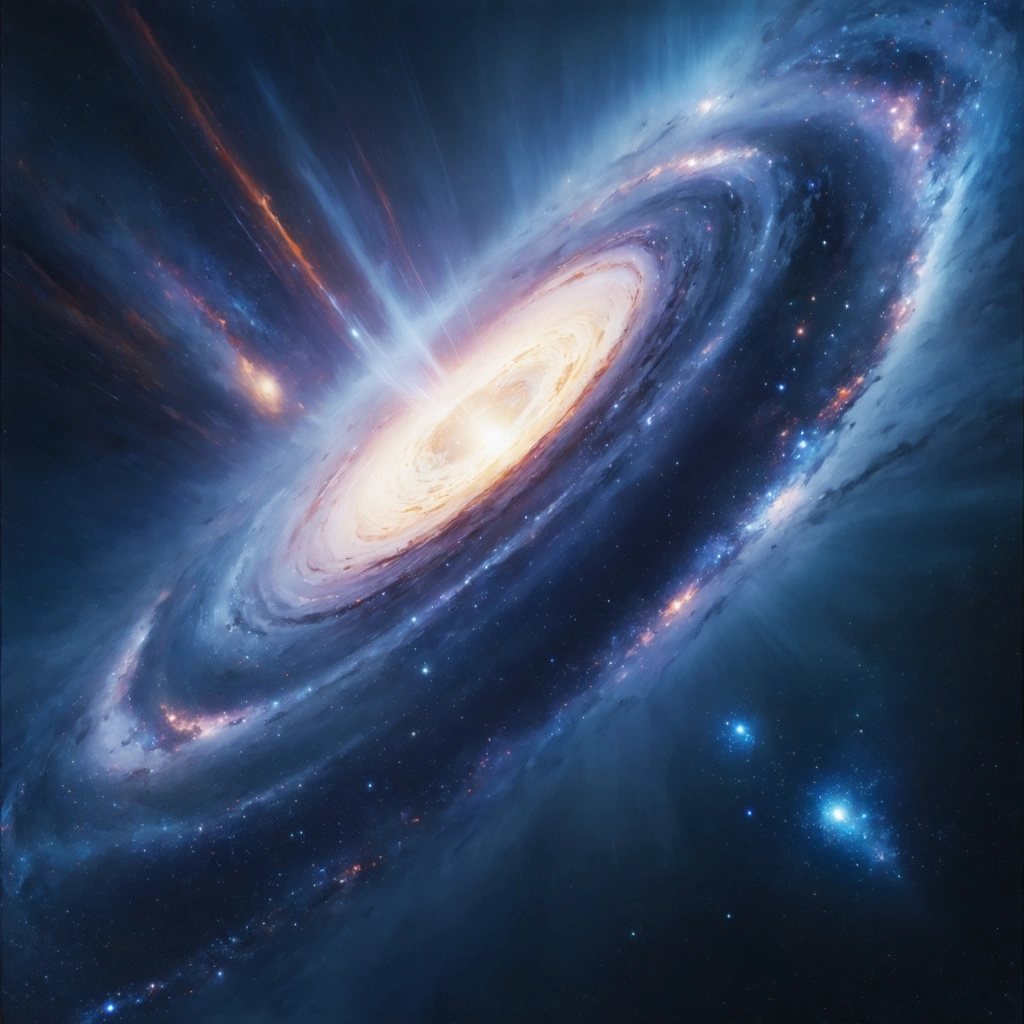
The Enigmatic Giant in the Cosmic Ocean
Imagine a cosmic behemoth so colossal that it defies our very understanding of the universe’s scale—a black hole that’s not just large but monstrously vast. This is Ton 618, a supermassive black hole whose sheer size and mass have fascinated astronomers and astrophysicists around the globe. But why does Ton 618 capture such intense curiosity? What makes this particular agujero negro stand out amid billions scattered across the cosmos? And what secrets does it hold about the nature of space, time, and the birth of galaxies?
Black holes, especially those of the supermassive variety, are already mind-boggling phenomena, warping reality and swallowing light itself. Yet Ton 618 pushes these boundaries to an extraordinary extreme. Nestled in a distant quasar billions of light-years away, it weighs in at an estimated 66 billion times the mass of our Sun. To put that into perspective, this is not your garden-variety black hole formed by a dying star—it’s a cosmic titan, a gravitational juggernaut whose enormity challenges even the most advanced scientific models.
Why Ton 618’s Size Raises More Questions Than Answers
Here’s the catch: while black holes themselves aren’t rare, Ton 618’s unfathomable mass throws a wrench into many existing theories about black hole formation and growth. How did it become so massive so quickly? Considering that the light we see from Ton 618 started its journey billions of years ago, we’re essentially peering back in time to observe a black hole that grew to gargantuan proportions very early in the universe’s history. This contradicts many models suggesting supermassive black holes require much longer periods to accumulate such mass.
Additionally, the environment around Ton 618, including its quasar activity, offers clues but also deepens the mystery. Quasars are incredibly luminous objects powered by black holes actively consuming material, and Ton 618’s brightness rivals that of thousands of galaxies combined. This energy output is a direct consequence of the intense gravitational pull of the black hole drawing in matter at incredible speeds. Yet, the scale and mechanics of this process at Ton 618’s magnitude are still poorly understood.
For scientists, the challenge isn’t merely about measuring the mass or size of Ton 618—it’s about understanding the cosmic context behind its existence. What conditions in the early universe allowed such a monster agujero negro to form? What implications does Ton 618 have for our broader understanding of galaxy evolution and the mysterious dark matter and energy that govern cosmic dynamics?
Peering Into the Abyss: What We Can Learn from Ton 618
As daunting as these questions are, they ignite a profound drive within the scientific community to unravel the mysteries locked within Ton 618. Thanks to advancements in telescope technology and observational methods, such as spectroscopy and X-ray astronomy, researchers are slowly piecing together a more detailed picture.
- Mass Measurement Techniques: By analyzing the light emitted from the quasar surrounding Ton 618, astronomers estimate its mass through the velocity of orbiting gas and stars.
- Accretion Disk Studies: Investigations into the structure and behavior of the accretion disk—the swirling mass of gas and dust spiraling into the black hole—help scientists understand energy dynamics and black hole feeding processes.
- Cosmological Implications: Ton 618 serves as a natural laboratory to test theories of early universe growth, dark matter interactions, and the evolution of cosmic structures.
In the following sections, we will delve deeper into these aspects, exploring the fascinating scientific endeavors surrounding Ton 618, its role as a cosmic landmark, and why this agujero negro is more than just an astronomical curiosity—it’s a window into some of the universe’s most profound mysteries.

Ton 618: Black Hole’s Vast Mystery
Ton 618 is one of the most fascinating and colossal black holes ever discovered, captivating astronomers and astrophysicists worldwide with its immense size and mysterious nature. This agujero negro challenges our understanding of black hole formation and growth, offering a unique glimpse into the extreme environments of the early universe.
What is Ton 618 and Why Is It So Significant?
Ton 618 is an ultramassive black hole located in a distant quasar, approximately 10.37 billion light-years away from Earth. It is classified as an agujero negro because of its gravitational pull so strong that not even light can escape from it. What makes Ton 618 particularly significant is its extraordinary mass — estimated to be around 66 billion times the mass of our Sun, making it one of the largest black holes ever observed.
The colossal size of Ton 618 fascinates astronomers because it pushes the limits of current theoretical models. Most black holes are millions or billions of times the Sun’s mass, but Ton 618’s gargantuan scale raises questions about how such massive black holes can form and grow so quickly in the universe’s early stages.
How Was Ton 618 Discovered and Measured?
Ton 618 was first identified as a quasar in the 1950s during surveys of the sky looking for luminous sources powered by black holes. Quasars are galaxies with extremely bright centers, caused by material falling into a supermassive black hole. The brightness and spectral characteristics of Ton 618 indicated a powerful central engine.
Scientists estimated Ton 618’s mass using the properties of its broad emission lines, particularly the hydrogen beta line, through a technique called reverberation mapping. This method measures the velocity of gas orbiting close to the black hole, allowing researchers to infer its gravitational influence and thus its mass.
Why is Understanding Ton 618 Important for Black Hole Research?
Studying Ton 618 provides vital clues about the formation and evolution of supermassive black holes and the galaxies that host them. Key reasons for its importance include:
- Early Universe Insights: Ton 618 existed when the universe was less than 3 billion years old, suggesting rapid growth mechanisms for black holes shortly after the Big Bang.
- Evolution of Galaxies: Understanding how Ton 618 grew helps astronomers study the co-evolution of black holes and their host galaxies, as such massive black holes can influence star formation and galactic dynamics.
- Testing Theories of Gravity and Accretion: The extreme mass and environment around Ton 618 allow scientists to test general relativity and models of gas accretion under intense gravitational fields.
What Makes Ton 618 Different from Other Black Holes?
While many black holes are categorized as stellar-mass (a few times the mass of the Sun) or supermassive (millions to billions of solar masses), Ton 618 belongs to the rare class of ultramassive black holes. Its distinct characteristics include:
- Massive Scale: Its mass is an order of magnitude greater than typical supermassive black holes, placing it among the heaviest ever known.
- Quasar Luminosity: The quasar powered by Ton 618 shines with a luminosity estimated to be tens of thousands of times greater than the total light output of the Milky Way.
- Distance and Age: Located billions of light-years away, it provides a snapshot of the universe’s distant past, revealing conditions when the cosmos was young.
How Does Ton 618 Affect Its Surroundings?
The enormous gravitational forces and high-energy radiation emitted by Ton 618’s accretion disk have profound effects on its galactic environment. These effects include:
- Regulating Star Formation: The energy output can heat surrounding gas, preventing it from cooling and collapsing into new stars.
- Driving Galactic Winds: Powerful outflows from the black hole can expel gas from the host galaxy, influencing its size and structure.
- Influencing Galaxy Evolution: Ton 618’s feedback mechanisms are crucial in shaping the galaxy’s growth trajectory over cosmic time.
What Are the Future Research Directions on Ton 618?
Ongoing and future observations aim to deepen our understanding of Ton 618 and similar black holes. Some of the research goals include:
- High-Resolution Imaging: Using advanced telescopes like the James Webb Space Telescope to study the host galaxy and environment in greater detail.
- Accretion Physics: Investigating how material spirals into such massive agujeros negros and the properties of the accretion disk.
- Gravitational Wave Detection: Exploring potential signals from mergers involving ultramassive black holes like Ton 618.
Summary
Ton 618 stands as a monumental example of the universe’s most extreme phenomena — an ultramassive black hole whose size and power challenge existing astrophysical paradigms. By studying this extraordinary agujero negro, astronomers gain invaluable insights into black hole growth, galaxy formation, and the fundamental laws governing gravity and matter under the most intense conditions known.

